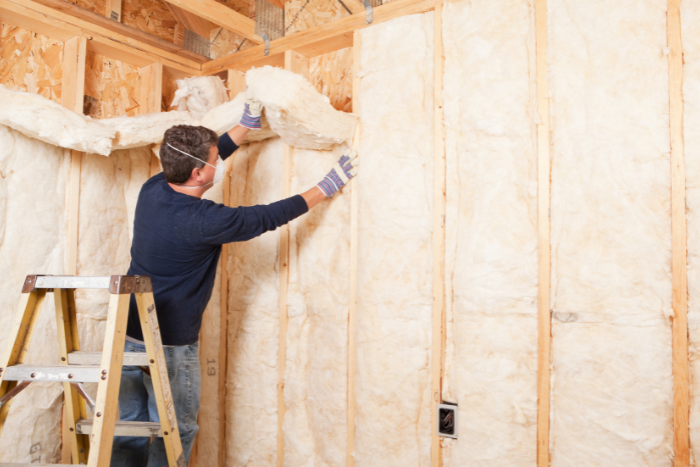Common Insulation Myths Debunked for Homeowners
Overview
Ever thought your energy bills were too high and blamed it on the weather? You’re not alone. Insulation can make a huge difference, but there’s a lot of misinformation out there. Let’s tackle some myths about insulation, especially spray foam, so you can make smart choices for your Fleming Island home.
Spray Foam Insulation: What’s the Deal?
Spray foam insulation is a type of insulation that expands to fill gaps. Picture it as a gap-filler that seals tight, blocking air and boosting energy efficiency. Unlike traditional insulation, spray foam doesn’t leave space for drafts or leaks.
Busting Common Insulation Myths
Myth 1: Insulation Only Helps in Winter
People often think insulation’s only for cold months. But it’s just as useful in summer. It helps keep cool air inside and hot air outside, making your home comfy year-round.
Myth 2: Spray Foam is Too Costly
Yes, spray foam costs more upfront. But it’s an investment. It lowers energy bills, so over time, you actually save money. In a few years, it can pay for itself.
Myth 3: All Insulation is the Same
Not true! Different materials do different things. Spray foam gives you an airtight barrier, which most other types of insulation can’t. This makes it better for areas where air leaks would be costly, like attics and exterior walls.
Myth 4: Humid Climates Don’t Need Insulation
Even in humid areas like Fleming Island, insulation is crucial. Spray foam keeps out moisture, which stops mold and mildew—something you don’t want growing in your walls.
Myth 5: Insulation Needs Regular Replacement
Spray foam is super durable. Once it’s in, it usually lasts as long as your house does. You won’t need to replace it often, unlike some other insulation types that can wear out.
Types of Spray Foam Insulation
You’ve got two main types of spray foam insulation, each good for different situations:
- Open-Cell Spray Foam: This foam is light and great for soundproofing. Best for interior walls.
- Closed-Cell Spray Foam: Heavier and denser. Works well for outdoor walls and high-moisture spots.
Picking the Right Insulation for Your Place
Choosing the right insulation comes down to a few things: climate, budget, and home structure. Spray foam is ideal for Fleming Island’s warmth and humidity. It helps reduce cooling costs by sealing out the heat and keeping your air conditioning efficient.
Getting Ready for Spray Foam Installation
Before spray foam goes up, make sure you’re set. Here’s a quick list:
- Check for Damage: Look for any repairs that may be needed first.
- Clear the Area: Move any furniture or items in the way.
- Seal Rooms as Needed: Some installations might need temporary room closures to contain the foam.
Tips for Installing Spray Foam
Thinking of doing it yourself? Here’s some advice:
- Call the Pros: Spray foam needs experience and special tools. A pro will do it safely and efficiently.
- Choose Quality Foam: Get foam designed for your specific needs and your climate.
- Ventilate Properly: Because spray foam seals tight, good ventilation keeps your indoor air fresh.
Where to Use Spray Foam Insulation
Spray foam works wonders in many spots around your home. Each area has unique benefits:
- Attics and Basements: Helps stop air leaks and regulate temperature.
- Exterior Walls: Blocks out moisture, boosts efficiency, and even reduces noise.
- Crawl Spaces: Prevents mold growth and discourages pests.
- HVAC Ducts: Insulates ducts, so heating and cooling work better.
Keeping Your Spray Foam Insulation in Top Shape
Spray foam doesn’t need a lot of attention. Still, check it every now and then for signs of wear, pests, or any unusual damage.
Additional Things to Keep in Mind About Spray Foam
A few other factors come into play when considering spray foam insulation:
- Air Quality: The airtight seal means you’ll want to ensure your home has good ventilation.
- Environmental Impact: Look for eco-friendly spray foam options low in VOCs (volatile organic compounds).
- Permits: Some places may require permits for spray foam installation, so check Fleming Island’s local regulations before starting.
DIY vs. Hiring a Pro
Considering a DIY project? Think it through! While DIY can be fun, Spray Foam in Fleming Island, FL is better left to professionals. It’s complex and requires special equipment. But if you’re confident in your skills, go for it. Just know that a professional job often gives better, more lasting results.
Conclusion
Spray foam insulation is an awesome way to make your home more comfortable and energy-efficient. By busting myths and understanding the facts, you can make informed choices. So whether you decide to go DIY or call in a pro, know that spray foam will keep your home cozy all year.
Frequently Asked Questions (FAQs) About Spray Foam Insulation
1. What exactly is spray foam insulation?
Spray foam insulation is a type of insulation that expands on application to fill gaps and create an airtight seal. It’s commonly used in attics, walls, crawl spaces, and around HVAC ducts for improved energy efficiency.
2. Is spray foam insulation safe for my home?
Yes, once cured, spray foam insulation is safe. During installation, however, you should ensure good ventilation and avoid the area until it’s fully set. Hiring a professional installer is recommended for best practices.
3. How does spray foam insulation save on energy costs?
Spray foam creates a tight seal that prevents air leaks, keeping warm air in during winter and cool air in during summer. This lowers the strain on your HVAC system, helping reduce energy bills.
4. Does spray foam insulation prevent mold?
Yes, spray foam resists moisture, which helps prevent mold growth. Unlike traditional insulation, it doesn’t absorb water, making it especially useful in humid areas.












Post Comment